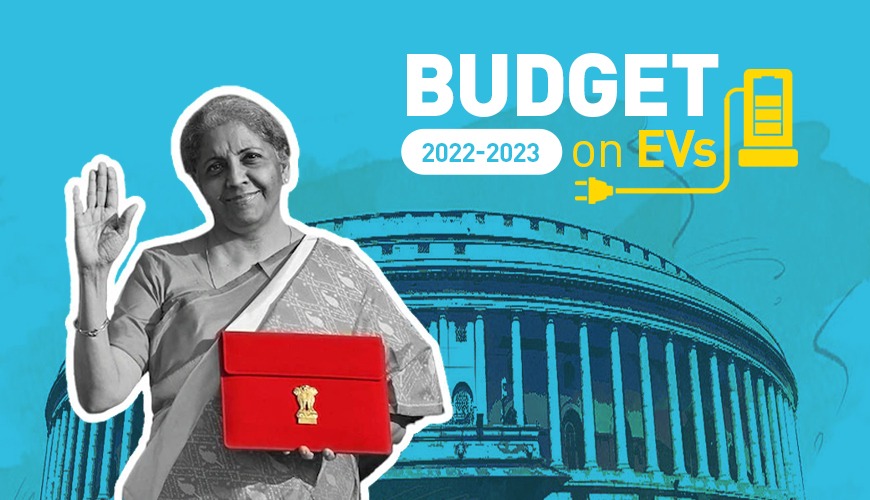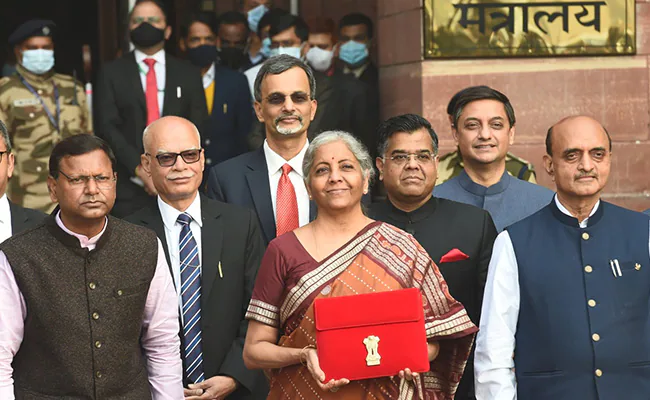
Every year, the automotive industry and vehicle enthusiasts alike, wait for the union budget with bated breath. As even minute changes in government policies can have long-term impacts. Not only on the growth of the industry but also the types of vehicles produced.
In recent years, these changes have affected various aspects of vehicle production and ownership. From the mandatory shift to BS6 fuel and vehicles. To the introduction of a 5-year minimum insurance span. As well as the adoption of more active safety features, like multiple airbags.
With the governments’ recent focus on building a more sustainable and green society. It was expected that this new budget with also includes some new announcements, but specifically for the EV space.
We have already seen how the FAME I and II schemes have helped the development of the EV market. So, it makes sense to adopt a more direct approach towards helping EV’s become the automotive market standard.
The government seems to agree to this approach, as they have just announced a slew of new announcements. Geared towards establishing new standards of charging and battery technologies. As well as providing safe spaces for such experimentation to happen organically.
Let us take a look at the top 5 such policy changes that were announced in the budget 2022. As well as how they will change the future direction of the automobile segment.

This is a move that we had been expecting for quite some time. As the governments of metro cities like Delhi, Mumbai, Bangalore, and others have already announced pilot programs. For the integration of electric vehicles in such spaces. Including but not limited to autos, trams, and electric buses.
Moreover, E-rickshaws already are a major part of the local public transport ecosystem. In both metros, as well as Tier-2 and Tier-3 cities. With more than 15 lakh e-rickshaws already running on our streets.
By making this shift to clean public transport a public policy. We can expect the changeover to happen a lot faster. Then the pace it would take place at. If it were left up to the individual urban centers to make it happen on their own time.
We know that even if we change all public transport to EVs. It still wouldn’t solve the urban pollution problem. As there are still millions of internal combustion vehicles running on the streets.
As long as people don’t have the incentive to change. They will keep on using their private vehicles, even in high-density urban areas. Which are notorious for their snarling traffic jams, and high pollution figures.
As a means of discouraging this behavior, and trying to encourage people to adopt EVs. The government has announced that they will set up special mobility zones. Where ICE vehicles will not be allowed, both in private or commercial use.
Moreover, these zones will also have no fossil fuel refueling stations. Instead, there will be a special focus given on EV charging facilities. To sustain the extra influx of private and public use EVs.
These zones could be as small as individual streets or marketplaces. Such as Chandni Chowk, Marine Drive, Mall Road, etc. To large tech parks, and educational and/or governmental campuses. Or even the entire city center spanning multiple miles.
One of the issues that need to be solved before such zones can become the norm. Are the constraints in urban areas regarding charging station facilities. Since this is an entirely new segment of vehicles. That also needs an entirely new re-fueling infrastructure to sustain.
The bottleneck towards the adoption of EVs becomes the availability of charging infrastructure. As much as the extra time it takes to charge current generation EVs.
A better solution is to have battery swapping centers. Where private and commercial users alike can go and simply swap out their existing battery, with a freshly charged one.
This will not only take away the time it takes to charge the EV, which according to current technology can be as high as a few hours. But also make it so that the cost of your vehicle doesn’t have to revolve around the price of a fixed battery.
This is what the government is trying to do, with the introduction of the new battery swapping policy. Which heavily encourages the establishment of such swapping centers. Which will also serve as centralized charging hubs.
This way, you don’t need to have a large number of EV chargers in high-density urban areas. Instead, you can get away with a handful of strategically placed buildings. Which can hold all the batteries, and their charging infrastructure.
Also Read: Charging Stations Infrastructure in India for Electric Vehicles
With the introduction of a battery swapping policy in budget 2022, the government is making it clear that they want a clear separation between personal EV ownership and its charging infrastructure.
This is vital for creating an affordable EV ecosystem. As by making batteries swappable, you are essentially taking them out of the EV ownership itself. So, customers don’t actually need to pay for them, as part of the upfront cost needed to switch to an EV.
This will not only help reduce the cost of EVs drastically. But also introduce a whole new industry that operates on a ‘battery or energy as a service’ model. Battery manufacturers can greatly benefit from this model. As they will retain the ownership of their stock, while still being able to get a profit in return.
At the same time, it will also cut down on the cost of updating EV technologies in the future. As newer, more efficient batteries can simply be swapped into the existing system. Without actually having to recall or resell millions of EV’s to existing EV customers.
This will help create a more sustainable & innovative business model for improving the efficiency of the EV ecosystem. That can prosper from the efforts of both public and private enterprises.
Perhaps the most drastic announcement, which will have the biggest impact on the EV industry. Was the announcement that the government will soon introduce national interoperability standards.
In layman terms, this means the battery swapping centers and ‘energy as a service’ businesses that we mentioned above. Will have to ensure that their systems work with all vehicles, from all manufacturers.
That means that all the battery companies will have to work together. To produce battery packs that have the same connection ports and standardized pack sizes.
In other words, automobile manufacturers will also have to ensure that all their vehicles, across all price and user segments. Will have to be compatible with the battery standards set by the government of India.
In other words, they can’t just sell vehicles that don’t feature the ability to swap out the batteries readily. Which, unfortunately, for now, is the standard for most current generation EVs. That features the battery as an integral part of the chassis.
This can have a negative impact as well. As it will force EV manufacturers to further invest in standardizing their vehicle designs. So, they can work with battery packs from any battery maker. Thus, eliminating any advantage that current manufacturers like Tesla have gained, in terms of the use of specific battery formulation, and/or charging modules.
In this manner, the announcements made in the budget 2022, are a double-edged sword for the EV industry. We can only wait and see how they will change the marketplace moving forward.
For More information visit: Press Information Bureau Government of India Website
Leave a Reply